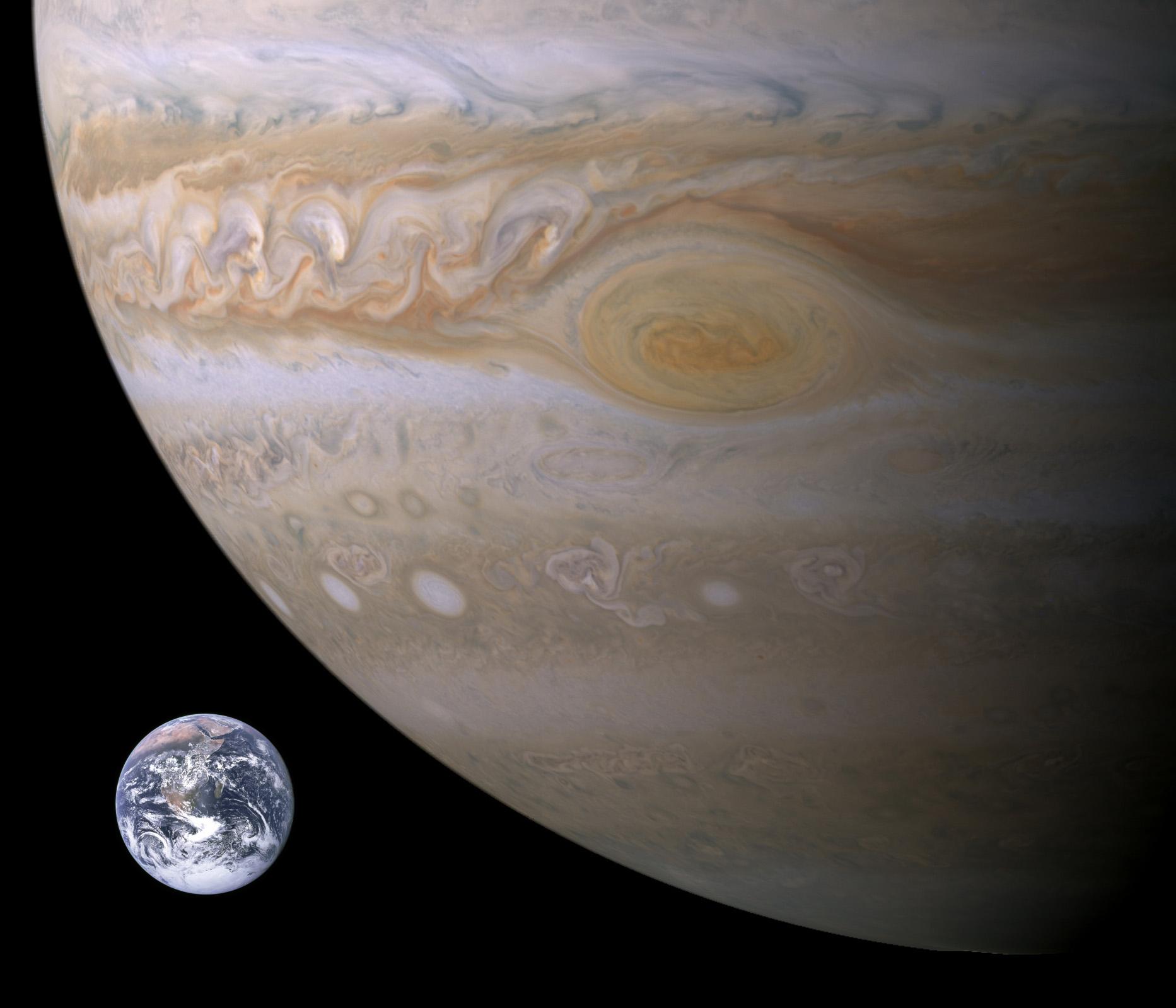
I recall as a kid in elementary school a special presentation in the cafeteria during lunch. Someone from the Johnson Space Center gave a talk about Voyager passing by Jupiter. The slide that showed the relative size of earth next to the image from Jupiter was stunning. The volcanoes on Io were also amazing. It was huge.
Then Voyager 2 went on to complete the Grand Tour, a voyage of discovery likely never to be repeated in our solar system. Voyager 2 zoomed past Saturn the following year in 1980. I was in high school by the time Voyager 2 flew past Uranus. I was in college when she sailed by Neptune. That was a quarter century ago and those brief encounters are still all we have of 2 of our largest planets. At that time, the internet as we know it did not yet exist, so it was often months before a decent image could be seen in a magazine and over a year before interesting discoveries discussed.
What was missing in the Grand Tour was a visit to the 9th planet: Pluto. This is because Pluto has a strange orbit and it was too difficult to change Voyager 2's trajectory to reach it. Pluto orbits so far away from the sun it takes 248 years to complete 1 orbit. It was discovered during late spring-time 85 years ago, and now Pluto is just entering fall!
Pluto is known to have an atmosphere, and calculations made it seem possible that during winter the planet would get so far from the sun that the entire atmosphere would freeze onto the surface. That was one reason why there was a rush to send a spaceship out to photograph the planet while the atmosphere, surface, and amount of sunlight were all optimal. Missing this window would mean waiting 180 years to try again! Fortunately, NASA was up to the now-or-practically-never challenge. The Pluto Fast Flyby was proposed in 1992, but it was 10 years later when a mission was proposed that had the right amount of science for the right cost. New Horizons was launched in 2006. Even as the fastest spacecraft ever launched, it still takes a Jupiter assist and 9 years of waiting.,,,
But here we are! The doorstep of Pluto is already beginning to reveal its secrets and the flyby next week will finally finish what we started. Pluto may have changed its status from Planet to Dwarf, but in many ways Pluto is in a class of its own. It is sometimes called King of the Trans-Neptunian Objects, although Eris is larger. However, Pluto is unique in that it is our only known double-planet system; Charon is so large and close to Pluto, that the two orbit around a barycenter that is outside the radius of Pluto... they orbit empty space. Even more cool, Charon and Pluto may share an atmosphere, at least part of the time.
There are sure to be many more exciting space missions, some that have the potential to really shake things up (lets get to Europa already!!). But finally getting to see a map of Pluto is for me the finale of the original foray into our backyard.
Try downloading Eyes on the Solar System and virtually fly along with New Horizons as she speeds past Pluto and beyond. The preview mode is pretty cool, and its the next best thing to waiting 5 hours for the radio signal to reach home.




No comments:
Post a Comment